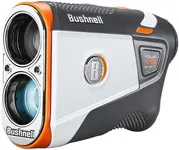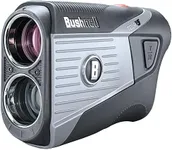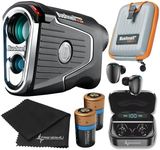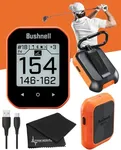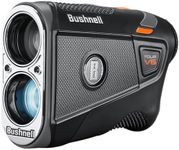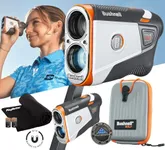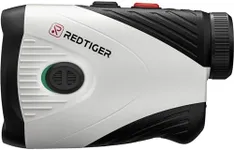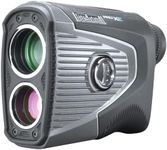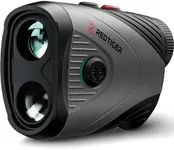Buying Guide for the Best Bushnell Golf Range Finders
Choosing the right golf range finder can significantly improve your game by providing accurate distance measurements to various points on the course. When selecting a range finder, it's important to consider several key specifications that will ensure the device meets your needs and enhances your golfing experience. Here are the key specs to look out for and how to navigate them.AccuracyAccuracy refers to how close the range finder's distance measurement is to the actual distance. This is crucial because precise measurements can help you choose the right club and make better shots. Accuracy is usually measured in yards, with high-quality range finders offering accuracy within one yard. For casual golfers, a range finder with accuracy within 2-3 yards may be sufficient, while competitive players should look for the highest accuracy available.
RangeRange indicates the maximum distance the range finder can measure. This is important for assessing long shots and planning your strategy. Range finders typically offer ranges from 400 yards to over 1000 yards. If you play on larger courses or need to measure long distances, opt for a range finder with a higher range. For smaller courses or casual play, a lower range may be adequate.
MagnificationMagnification refers to how much closer the range finder can make distant objects appear. This helps you see the target more clearly and can improve your aim. Magnification levels usually range from 4x to 7x. Higher magnification can be beneficial for spotting distant targets, but it may also make the device harder to stabilize. Choose a magnification level that balances clarity and ease of use based on your needs.
Slope MeasurementSlope measurement accounts for the incline or decline of the terrain, providing adjusted distances to help you make more accurate shots. This feature is particularly useful on hilly courses. Some range finders offer slope measurement that can be turned on or off, which is important for tournament play where slope measurement is not allowed. If you play on varied terrain, consider a range finder with this feature.
DisplayThe display shows the distance and other relevant information. A clear, easy-to-read display is essential for quick and accurate readings. Displays can be LCD or LED, with some offering additional features like brightness adjustment or color options. Choose a display that is easy to read in various lighting conditions and provides the information you need at a glance.
DurabilityDurability refers to how well the range finder can withstand the elements and rough handling. This is important for ensuring the device lasts through many rounds of golf. Look for range finders that are water-resistant, shockproof, and made from sturdy materials. If you often play in challenging weather conditions or are prone to dropping your equipment, prioritize durability.
Battery LifeBattery life indicates how long the range finder can operate before needing a recharge or battery replacement. This is important for ensuring the device is ready to use when you need it. Battery life can vary widely, with some range finders offering several rounds of use on a single charge. Consider how often you play and choose a range finder with a battery life that matches your playing habits.
